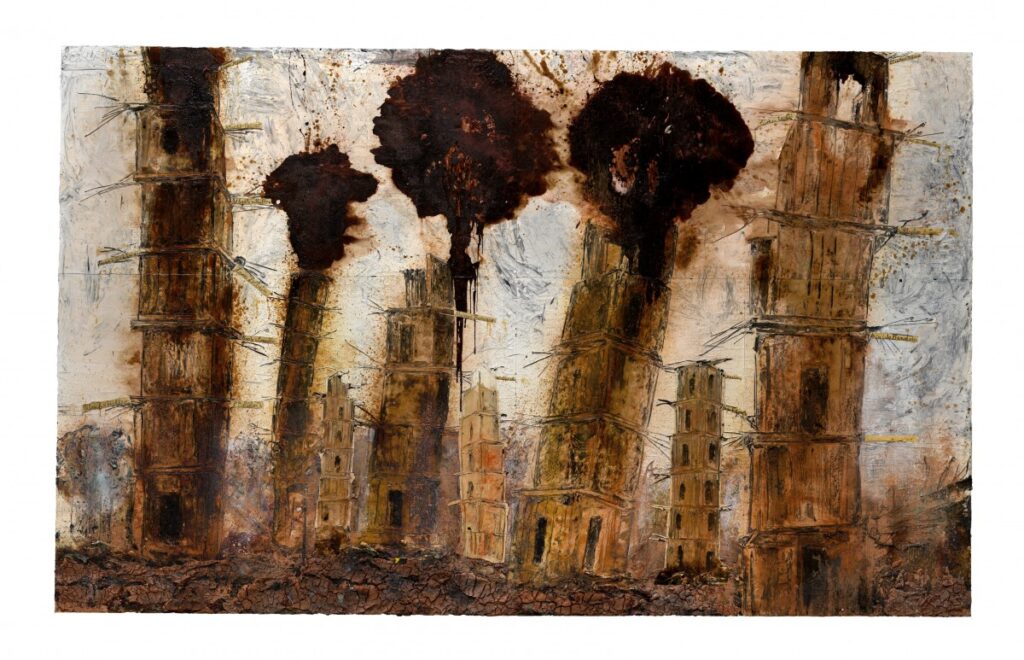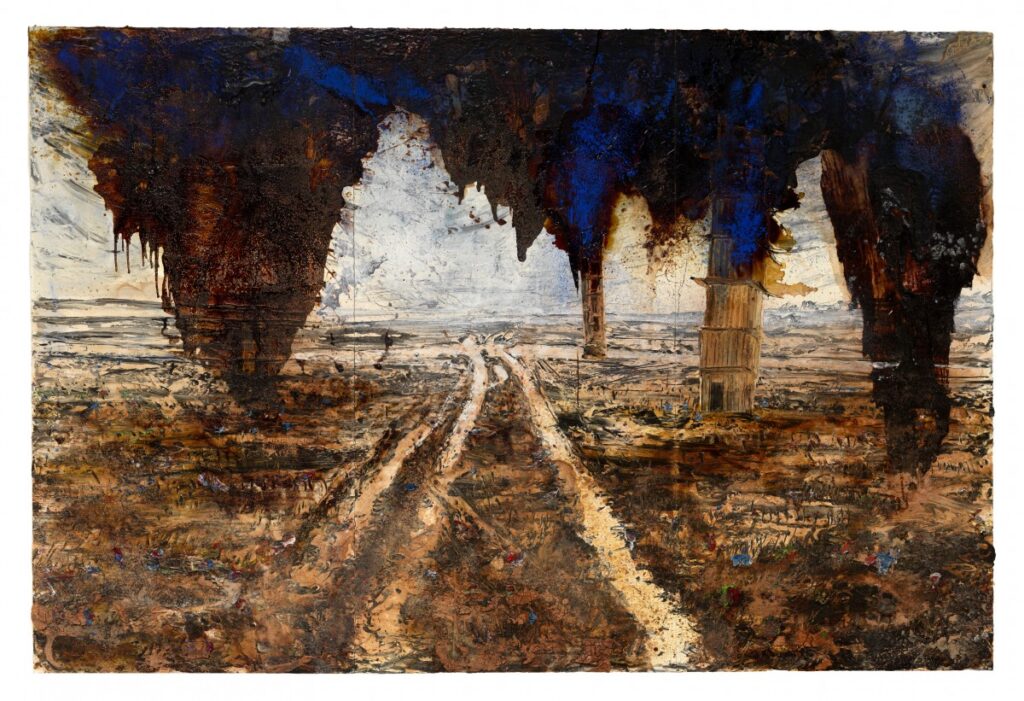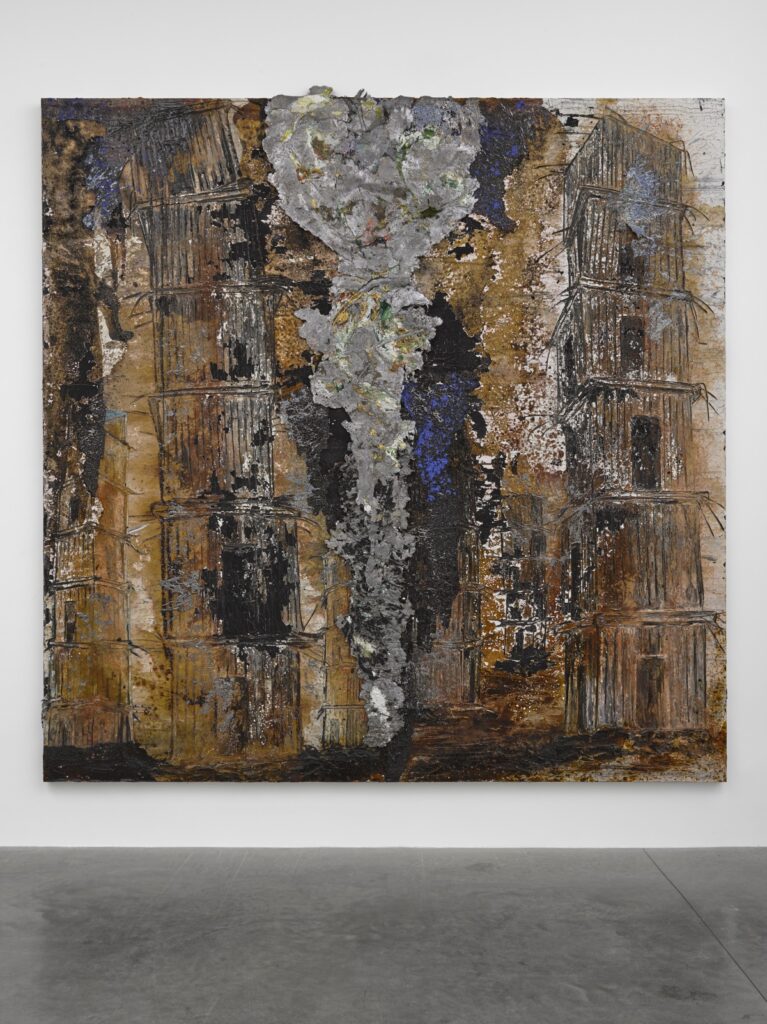Rather than work directly with sound for this project I decided I would work with the visual representation of sound. My initial idea was to listen to sounds and map my interpretations of the sounds through abstract shapes, colour and atmosphere; however, I thought that it may be more interesting to work the other way around, considering artists that I feel depict scenes, particularly landscapes, that create a sense of sound in the viewer’s imagination. Hence I intend to explore the connection between visual and aural imagination.
The artist and works that I have been considering are Anselm Kiefer paintings from his Walhalla series.
 Böse Blumen, Anselm Kiefer, 2016, Oil, acrylic, emulsion, shellac and clay on canvas.
Böse Blumen, Anselm Kiefer, 2016, Oil, acrylic, emulsion, shellac and clay on canvas.
Kiefer’s Böse Blumen visually depicts various explosions but in so doing this also allows the viewer to draw from their aural memory and “hear” the sounds of these explosions in their imagination.
The noise that is depicted does not, however, need to be as specific as explosions.
 Rorate caeli desuper, Anselm Kiefer, 2016, Oil, acrylic, emulsion, shellac and clay on canvas.
Rorate caeli desuper, Anselm Kiefer, 2016, Oil, acrylic, emulsion, shellac and clay on canvas.
In contrast to the very specific aural response conjured by Böse Blumen, Kiefer’s Rorate caeli desuper, in my imagination, creates many vague noises. The business of the foreground, with small details creates a sense of high pitched scratching noises, in contrast to the heavy brown and blue shape hanging and dripping down over the painting which suggests a deep base noise as an undertone to the whole piece.
Materiality also influences the noises I imagine in a response to a piece, for example:
 Walhalla, Anselm Kiefer, 2015-16, Oil, acrylic, emulsion, shellac and lead on canvas.
Walhalla, Anselm Kiefer, 2015-16, Oil, acrylic, emulsion, shellac and lead on canvas.
For example, the use of lead on this piece creates a sense of metallic noise in my individual imagination.



Leave a Reply
You must be logged in to post a comment.